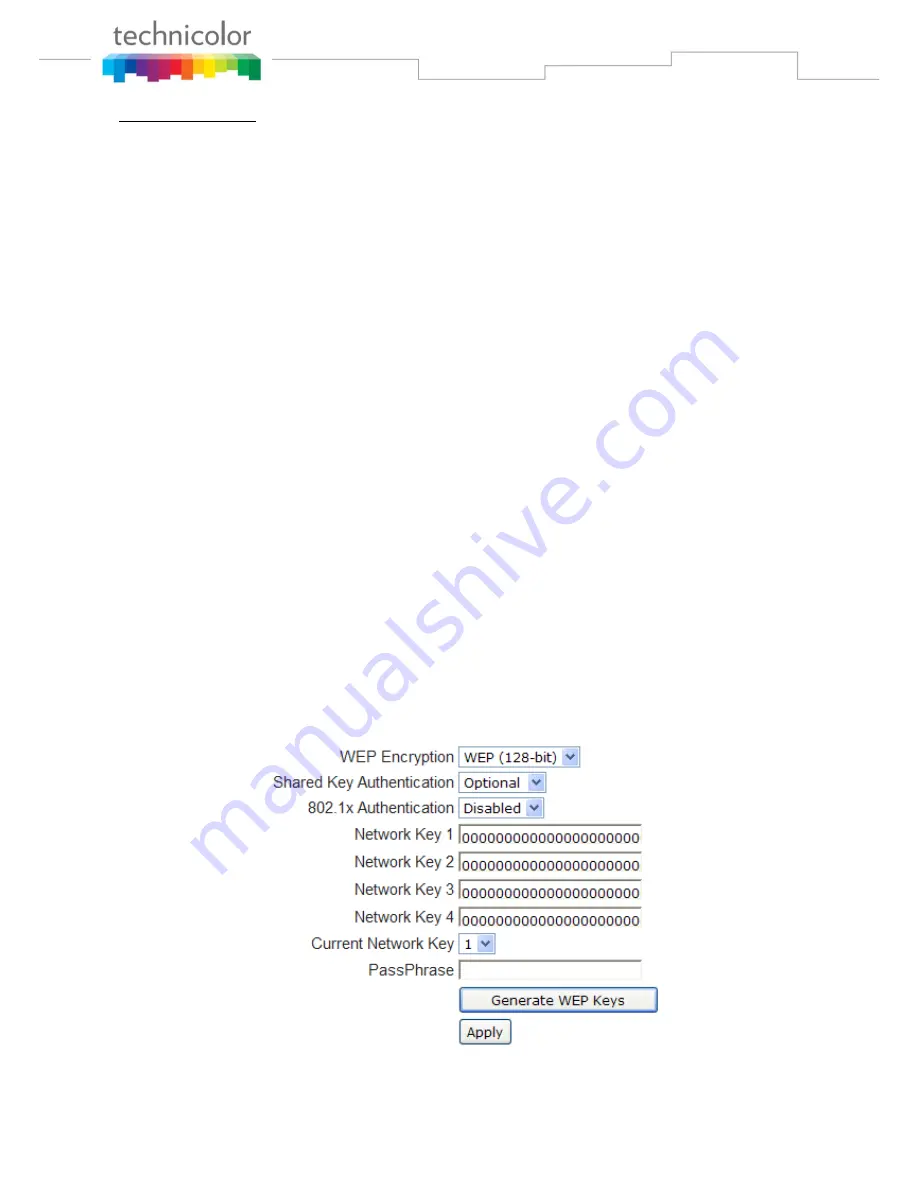
Page
60
/
85
■ WEP Encryption:
You can choose
64-bit
or
128-bit
according to your needs. If you choose
Disabled
, the Network Keys
will not be shown on this page. If selected, the data is encrypted using the key before being transmitted.
e.g., If you set 128-bit in this field, then the receiving station must be set to use the128 Bit Encryption,
and have the same Key value too. Otherwise, it will not be able to decrypt the data.
(Note: You need to connect one end of the Ethernet cable to the Ethernet port on the back of your
computer, and the other end to the ETHERNET port on the Wireless Voice Gateway.)
If you select WEP (
64-bit
or
128-bit
), you can adjust the following settings-
Shared Key Authentication
:
Decide whether to set the shared key
Optional
or
Required
by selecting from the drop-down menu.
Network Key 1 to 4:
The system allows you to enter four sets of the WEP key. For
64-bit
WEP mode, the key length is 5
characters or 10 hexadecimal digits. As for
128-bit
WEP mode, the key length is 13 characters or 26
hexadecimal digits.
Current Network Key:
Select one set of the network key (from 1 to 4) as the default one.
Passphrase:
You can enter ASCII codes into this field. The range is from 8 characters to 64 characters. For
ASCII
characters
, you can key in
63
characters in this field. If you want to key in
64
characters, only
hexadecimal characters
can be used.
Generate WEP Keys:
Click this button to generate the Passphrase
.
Apply:
After proper configuration, click Apply to invoke the settings.
Fig. 2-35 WEP (64-bit) / WEP (128-bit)
















































